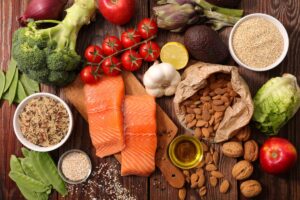 1. Where do phosphates come from?
1. Where do phosphates come from?
Phosphorus is naturally present in nearly all foodstuffs. It is absorbed by the human body in the form of phosphates.
The main sources of food phosphates are proteins, in particular eggs, meat and dairy products, and wholegrain cereals. China is a country of rich phosphate mineral resources, mainly distributed in Guizhou, Yunnan, Sichuan and Hubei provinces.
2. Why do our bodies require phosphates?
Phosphorus is the sixth most important component of our bodies (Hydrogen 63%; Oxygen 25% (including body water content), Carbon 9.5%; Nitrogen 1.4%; Calcium 0.33%; Phosphorus 0.22%), mainly in the form of phosphates. Phosphates are key components of DNA, cell structures and energy transmission in cells, as well as bones and teeth, and are involved in many biological processes. They are essential to the health of all living creatures.
As our bodies regularly excrete phosphates through the kidneys, it is vital that we constantly replenish our supplies.
To ensure good health, the minimum RDA is 700 mg for adults, 800 mg for pregnant women and 1,250 mg for teenagers.
Phosphorus and calcium intake needs to be balanced, as high doses of either may prevent assimilation of the other. This is why some women who are given calcium supplements for osteoporosis also need to take phosphate supplements.
3. Why does the food industry require food phosphates?
Phosphates are used to improve foodstuffs. They have a wide range of properties which enable the best aspects of foodstuffs to be preserved. Without phosphates, many farm products would be past their best before they reached consumers’ plates.
Phosphates are used for a number of purposes:
- To preserve natural taste and color; and the natural juices of meat and crustaceans
- To prevent the development of certain bacteria
- To ensure even rising of cakes and pastries during baking
- To ensure the homogeneity of dairy products
- To encourage the development of ‘good’ bacteria in cheeses
- To improve the free-flowing properties of powdered foodstuffs
- To reactivate certain ingredients in pharmaceuticals
4. Which foodstuffs contain phosphates?
Almost 90% of the phosphates are used in fertilizers, detergents and food supplements for farm animals. Food phosphates account for only 1% of phosphate consumption.
The food industry uses phosphates for cakes and pastries, meats, poultry and delicatessen products, frozen seafood, processed cheeses, dairy products, fried potatoes, soups and sauces, powdered foods, alcoholic beverages, dietary supplements and medicines.

